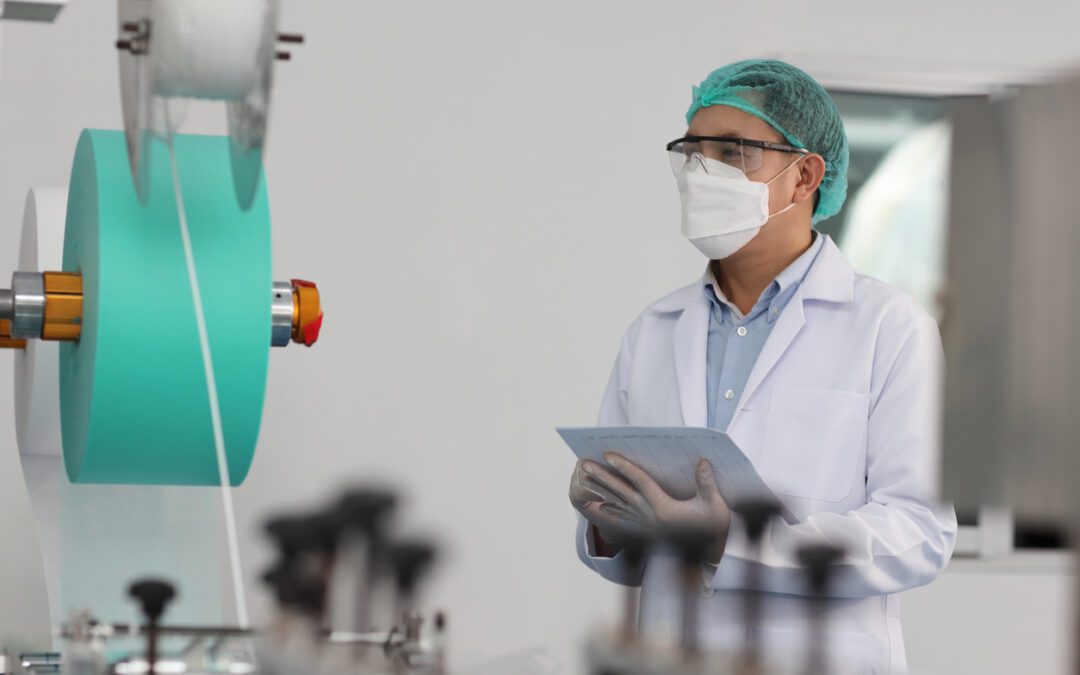Bringing Efficiency and Precision to the Healthcare Industry
Precision and efficiency are paramount in modern medicine, particularly in surgical procedures where every decision can have significant implications for patient outcomes. With the advent of 3D printing technology, healthcare professionals are now equipped with powerful tools to enhance surgical planning and simulation, revolutionizing the way complex procedures are approached.
Before the advent of 3D printing technology, healthcare professionals faced significant challenges in surgical planning and simulation, relying primarily on two-dimensional imaging techniques that provided limited spatial information and required considerable interpretation. However, with the introduction of 3D printing, a paradigm shift has occurred, equipping healthcare professionals with powerful tools to revolutionize surgical practices. Now, surgeons can create highly accurate three-dimensional models of patient anatomy based on medical imaging data, allowing for precise visualization of complex structures and pathology. These 3D models enable surgeons to identify potential challenges, plan optimal approaches, and develop personalized surgical strategies tailored to each patient’s unique anatomy. Furthermore, 3D printing facilitates advanced surgical simulation, enabling surgeons to practice complex procedures in a risk-free virtual environment and refine their techniques before entering the operating room.
This transformative technology has not only enhanced the efficiency and precision of surgical planning and simulation but has also improved patient outcomes and advanced the quality of care in modern medicine. In this blog, we’ll explore how 3D printing is transforming surgical practices by enabling unparalleled levels of precision and efficiency through advanced planning and simulation techniques.
Enhanced Surgical Planning
Traditionally, surgical planning relied on two-dimensional imaging techniques such as X-rays, CT scans, and MRIs, which provided limited spatial information and often required considerable interpretation by the surgical team. However, 3D printing technology has revolutionized the planning process by allowing surgeons to create highly accurate three-dimensional models of patient anatomy based on medical imaging data.
These 3D models provide surgeons with a tangible representation of the patient’s anatomy, enabling them to visualize complex structures and pathology in greater detail. By examining these models, surgeons can identify potential challenges, plan the optimal approach, and develop personalized surgical strategies tailored to each patient’s unique anatomy. This level of precision in surgical planning not only enhances patient safety but also reduces the risk of complications and improves surgical outcomes.
3D printing technology enables the creation of patient-specific surgical guides and templates, which serve as valuable tools during the procedure. These guides are designed based on the patient’s anatomy and surgical plan, allowing surgeons to accurately navigate the surgical site and perform precise interventions with minimal invasiveness. By reducing the reliance on intraoperative improvisation, patient-specific guides streamline surgical workflows, shorten operating times, and improve overall efficiency in the operating room.
A Case Study
A 65-year-old patient presented with severe osteoarthritis in the hip joint, requiring a total hip replacement surgery. Traditional imaging techniques provided limited insight into the extent of bone degeneration and the optimal placement of prosthetic components. To overcome these challenges, the surgical team utilized 3D printing technology to create a patient-specific 3D model of the hip joint.
The 3D-printed model accurately replicated the patient’s anatomy, allowing surgeons to visualize the extent of bone deformities and plan the optimal placement of the prosthetic components. By manipulating the 3D model, surgeons could simulate different surgical scenarios, assess the feasibility of various approaches, and anticipate potential challenges during the procedure.
Outcome:
The use of 3D printing technology revolutionized the surgical planning process and significantly enhanced the accuracy and efficiency of the total hip replacement surgery. By leveraging patient-specific 3D models, surgeons were able to achieve precise alignment of the prosthetic components, optimize soft tissue balancing, and minimize the risk of complications.
Advanced Surgical Simulation
In addition to enhancing surgical planning, 3D printing technology facilitates advanced surgical simulation, allowing surgeons to practice complex procedures in a risk-free virtual environment. Using 3D-printed anatomical models and simulators, surgeons can simulate various surgical scenarios, refine their techniques, and anticipate potential challenges before entering the operating room.
Surgical simulation enables surgeons to develop and hone their skills in a controlled setting, improving their proficiency and confidence when performing actual procedures. By repeatedly practicing intricate maneuvers and experiencing realistic surgical scenarios, surgeons can enhance their surgical dexterity and decision-making abilities, ultimately leading to better patient outcomes.
Surgical simulation fosters interdisciplinary collaboration and education within the healthcare community. Surgeons can collaborate with radiologists, anatomists, and biomedical engineers to develop customized simulation models that accurately replicate specific surgical scenarios. These models can also be used for training purposes, allowing surgical teams to familiarize themselves with the procedure and optimize their workflow before conducting live surgeries.
A Case Study
A 55-year-old patient was diagnosed with a complex congenital heart defect known as Tetralogy of Fallot, requiring surgical intervention. The surgical team utilized 3D printing technology to create a patient-specific 3D model of the patient’s heart anatomy.
The 3D-printed cardiac model allowed surgeons to practice the intricate steps of the surgical procedure in a risk-free virtual environment. Using surgical instruments and techniques identical to those used in the operating room, surgeons simulated various surgical scenarios, such as repairing the ventricular septal defect and reconstructing the pulmonary artery.
Outcome:
The use of 3D printing technology for cardiac surgery simulation revolutionized the training process and significantly improved surgical outcomes for patients with complex congenital heart defects. Surgeons were able to gain hands-on experience and refine their skills in a realistic setting, without the risks associated with live surgery.
3D printing technology is revolutionizing surgical practices by enabling unprecedented levels of efficiency and precision in surgical planning and simulation. By leveraging 3D printing to create patient-specific anatomical models, surgical guides, and simulation tools, healthcare professionals can optimize surgical workflows, improve patient outcomes, and advance the quality of care. As 3D printing technology continues to evolve, we can expect further innovations that will further enhance surgical practices and ultimately benefit patients worldwide.
Nota3D provides industry-leading surgical planning, implants, and instrumentation to help medical device manufacturers and healthcare providers accelerate innovation and transform healthcare. At Nota3D, we pride ourselves on being a resource for our customers to continuously develop internal processes, drive innovation, and increase efficiency by utilizing the finest additive manufacturing technology. We achieve this by being a team of experts for you to partner with and depend on. We help you find clarity in the crowded world of 3D printing and software. Start with Nota3d.

